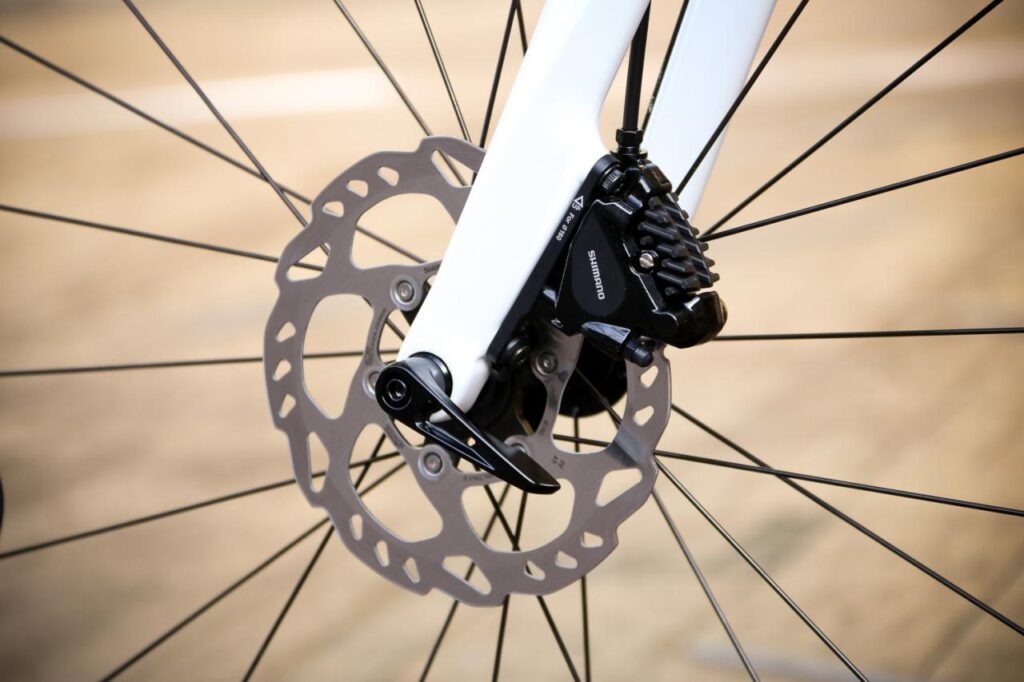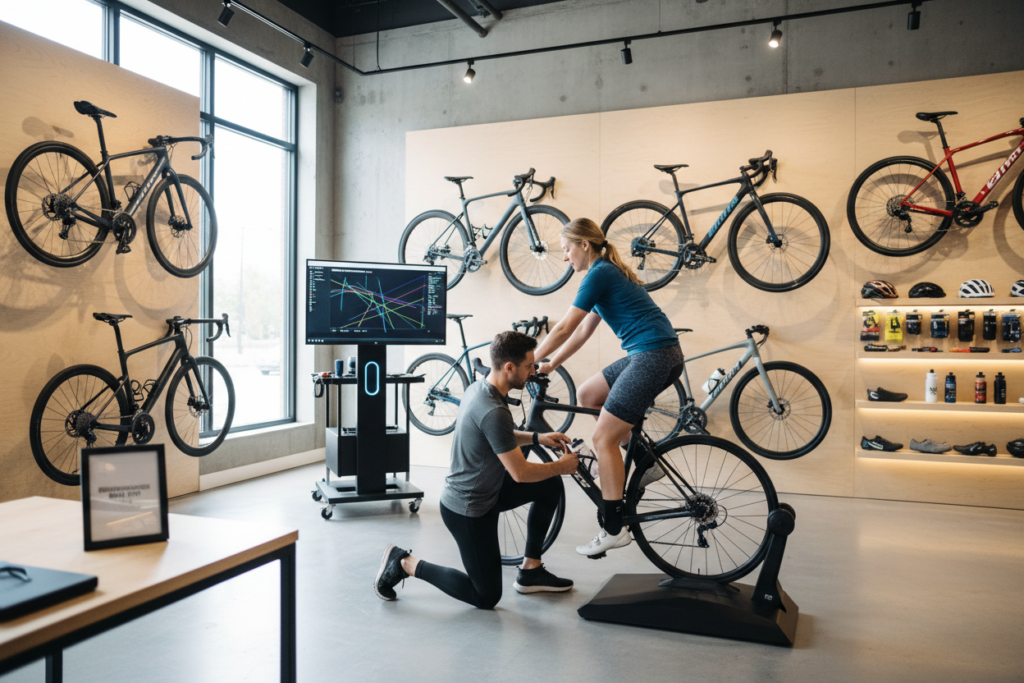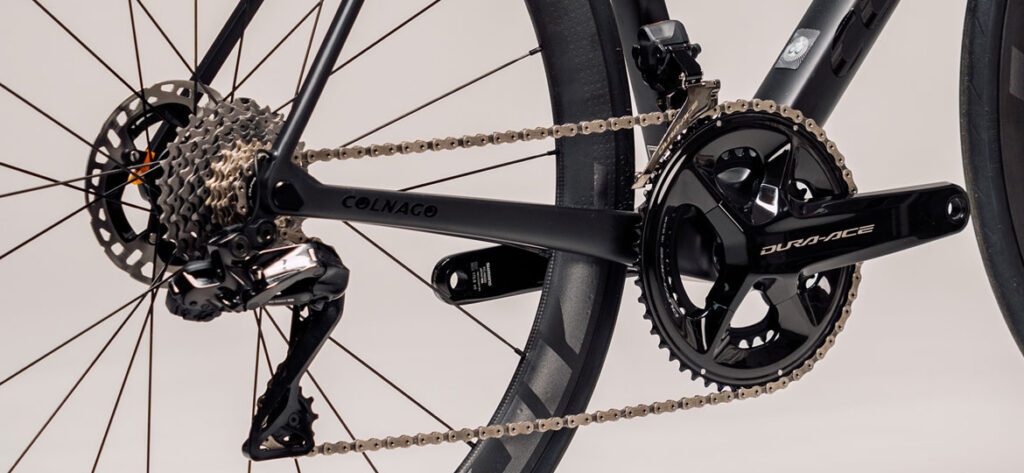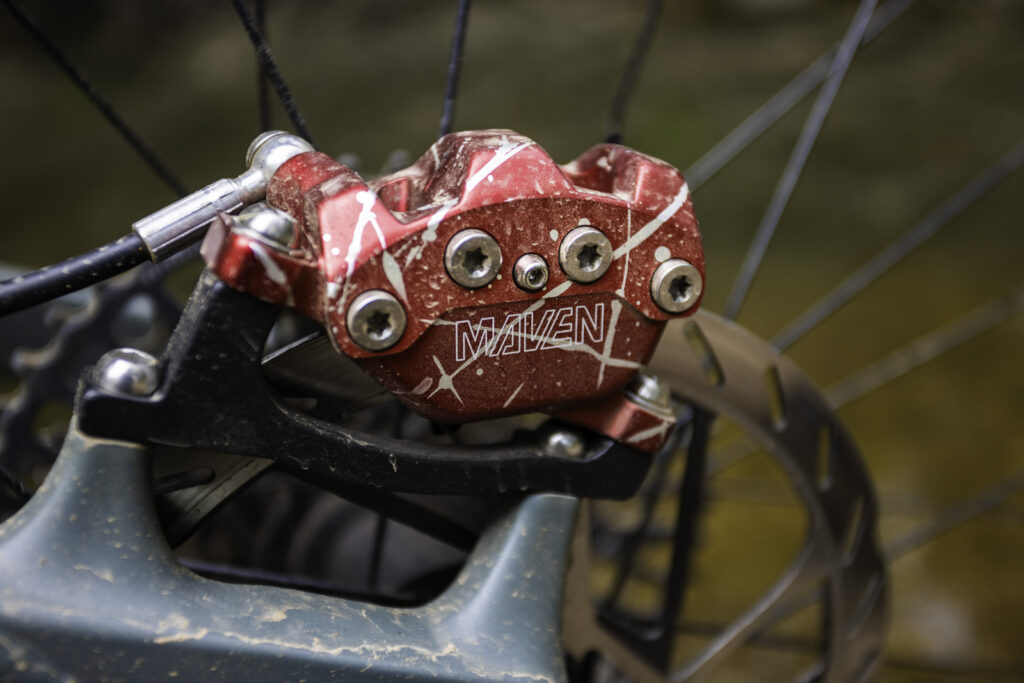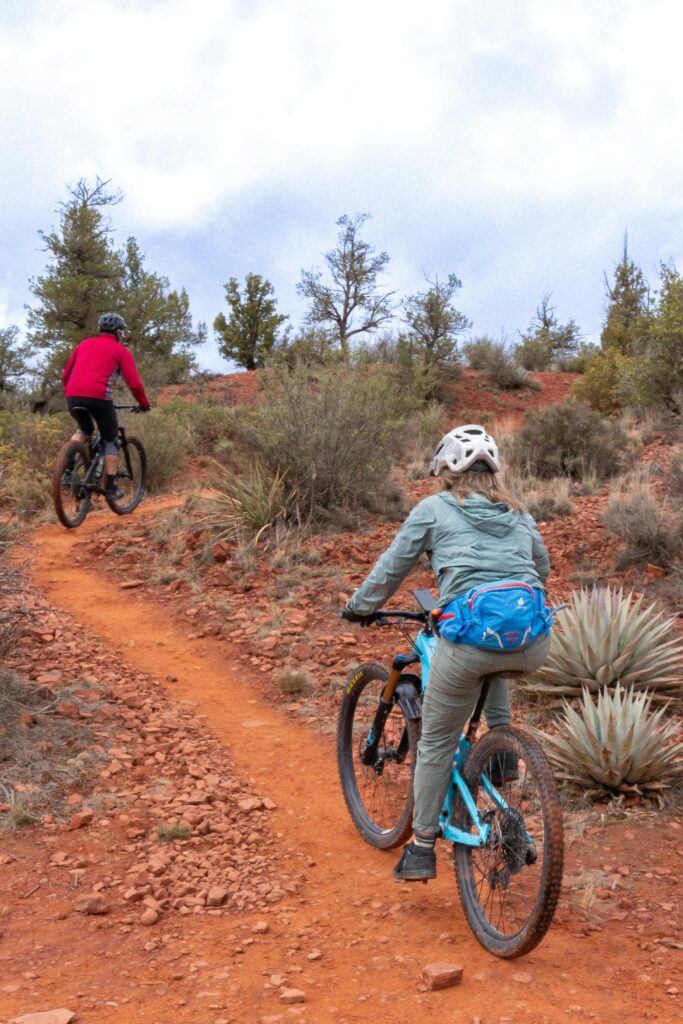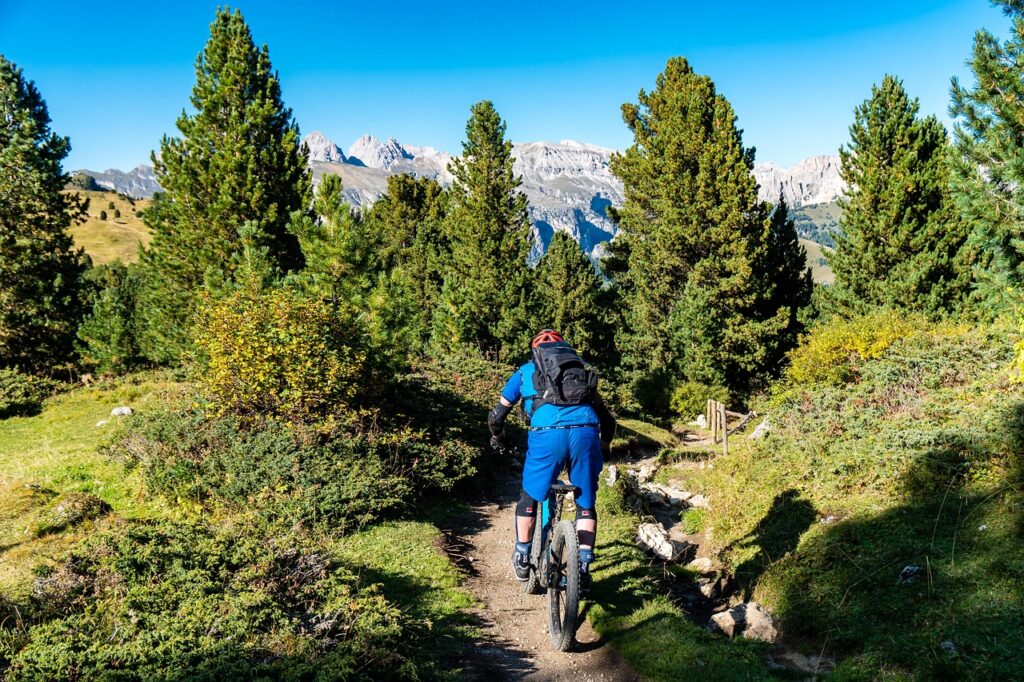When it comes to bicycle performance, speed gets all the glory — but control wins every ride.
The ability to brake smoothly, predictably, and with confidence defines how fast you can go, how safely you can descend, and how connected you feel to your bike.
In 2026, braking technology has evolved dramatically — with better heat management, lighter designs, integrated hydraulics, and even wireless prototypes on the horizon.
But no matter how advanced the tech gets, the fundamentals remain the same: the best brakes balance power, modulation, and reliability.
This guide compares the world’s leading brake systems — Shimano, SRAM, Magura, and TRP — to help you choose the right setup for your riding style and bike type.
Why Brake Systems Matter
Brakes aren’t just safety equipment — they’re an essential part of your bike’s performance and feel.
A well-designed brake system allows you to:
- Control speed without skidding.
- Corner with more precision.
- Descend faster with confidence.
- Ride longer without hand fatigue.
- Stop consistently in all weather conditions.
Modern braking systems must handle a wide range of bikes — from 15 lb. carbon race machines to 60 lb. e-bikes — and that’s why design and materials matter more than ever.
How Modern Bike Brakes Work
Most high-end bicycles now use hydraulic disc brakes, which offer more stopping power and control than traditional rim brakes.
Core Components:
- Brake levers: Activate the system via fluid or cable.
- Calipers: Contain pistons that push pads against the rotor.
- Rotors: Steel discs that create friction for stopping.
- Hoses and fluid: Transfer lever force to the calipers.
Types of Brakes Still Used in 2026:
- Hydraulic Disc Brakes – Most powerful and consistent (MTB, road, gravel, e-bike).
- Mechanical Disc Brakes – Cable actuated; cheaper, easier to service.
- Hydraulic Rim Brakes – Found on touring, urban, and legacy bikes (Magura HS33).
- Mechanical Rim Brakes – Now limited mostly to budget bikes and retro builds.
What Defines a Great Brake System
A brake’s performance is shaped by five key factors:
- Power: How much force it delivers at the rotor.
- Modulation: How precisely that power can be applied.
- Consistency: Reliability under heat, cold, or rain.
- Maintenance: Ease of bleeding, pad swaps, and setup.
- Weight & Feel: Ergonomics, lever feedback, and total mass.
Every major brand takes a different approach to balancing those factors — which is what makes this comparison so interesting.
1. Shimano Brakes — The Benchmark of Consistency
For decades, Shimano has set the global standard in braking performance. Its systems are known for their predictable modulation, smooth lever feel, and bulletproof reliability.
Core Technology
- Servo Wave Levers: Increase braking power while maintaining control.
- Ice Technologies: Rotor and pad cooling fins reduce fade on long descents.
- Mineral Oil Fluid: Non-toxic and stable over time.
- One-Way Bleeding System: Makes maintenance fast and foolproof.
Top Models (2026)
| Model | Type | Best For |
|---|---|---|
| Dura-Ace R9270 | Hydraulic disc | Road racing |
| GRX RX825 | Hydraulic disc | Gravel and adventure |
| XT M8120 | 4-piston disc | Trail and enduro |
| XTR M9120 | 4-piston disc | Elite XC and DH |
| MT520 | 4-piston hydraulic | E-bikes and all-mountain |
Performance
Shimano brakes are famous for linear response and quiet operation. The lever feel is buttery smooth, and power delivery is extremely consistent, even when hot.
Strengths
- Ultra-consistent feel
- Massive global support
- Long-lasting mineral oil fluid
- Excellent noise control
Weaknesses
- Slightly less initial bite than SRAM or Magura
- Levers can feel softer on very steep terrain
Verdict: Shimano remains the most reliable, consistent, and serviceable braking brand in the world.
2. SRAM Brakes — Power and Modularity
SRAM built its reputation on simplicity and innovation. In braking, that translates to systems that are powerful, tunable, and easy to maintain — especially for aggressive riders.
Core Technology
- SwingLink Levers: Deliver strong bite with smooth modulation.
- DOT 5.1 Fluid: High boiling point for fade resistance.
- Bleeding Edge System: Simplifies service and fluid swaps.
- Centerline Rotors: Reduce vibration and improve alignment.
Top Models (2026)
| Model | Type | Best For |
|---|---|---|
| Red AXS HRD | Hydraulic disc | Road and gravel |
| Force AXS HRD | Hydraulic disc | All-road |
| Code RSC | 4-piston hydraulic | Enduro and downhill |
| G2 Ultimate | 4-piston | Trail and all-mountain |
| DB8 | Mineral oil hydraulic | Budget-friendly, easy maintenance |
Performance
SRAM brakes deliver sharp initial bite and aggressive stopping power. The modulation is slightly less progressive than Shimano’s, but perfect for technical, fast riding where you want instant response.
Strengths
- Extremely powerful brakes
- DOT fluid resists heat fade
- Clean aesthetics and easy bleeding
- Excellent lever ergonomics
Weaknesses
- Slightly noisier in wet conditions
- DOT fluid can be messy and corrosive
- Some riders find modulation too “digital”
Verdict: The go-to choice for aggressive riders and racers who want power and bite on demand.
3. Magura Brakes — The Modulation Masters
Magura represents the pinnacle of control and feel. German-engineered and meticulously crafted, their systems are trusted by downhill pros, e-MTB riders, and anyone who values precision braking.
Core Technology
- Carbotecture® Construction: Lightweight composite lever bodies.
- Royal Blood Mineral Oil: Maintenance-free, long-lasting hydraulic fluid.
- HC3 Adjustable Levers: Tune leverage ratio for custom feel.
- 4-Piston Calipers: Incredible stopping power and even pressure.
- MDR Rotors: Heat-stable, vibration-free braking.
Top Models (2026)
| Model | Type | Best For |
|---|---|---|
| MT7 Pro EVO | 4-piston disc | Downhill and e-MTB |
| MT5 | 4-piston disc | Trail and enduro |
| MT8 SL | 2-piston | XC racing |
| HS33 EVO | Hydraulic rim | Touring and urban |
| MCi | Integrated system | Cockpit-integrated bikes |
Performance
No brand offers better modulation than Magura. The power builds progressively, allowing subtle control even on technical descents. The levers feel smooth, responsive, and distinctively “mechanical.”
Strengths
- Best modulation and lever feel in the business
- Lightweight, strong construction
- Excellent fade resistance
- Perfect for e-bikes and aggressive riding
Weaknesses
- Limited service network in North America
- More expensive than comparable models
- Setup can be slightly finicky for first-time users
Verdict: Magura is for riders who demand the ultimate in precision and control — pure German braking perfection.
4. TRP (Tektro Racing Products) — Quiet Strength
TRP, the performance division of Tektro, has grown from underdog to respected contender — especially in cyclocross, gravel, and e-bike markets.
Core Technology
- Hybrid systems: Combine mechanical actuation with hydraulic power.
- Performance rotors: Designed for quiet, consistent braking.
- E-bike integration: Strong OEM presence in commuter and utility bikes.
- Tool-free reach adjust: Easy customization for hand size.
Top Models (2026)
| Model | Type | Best For |
|---|---|---|
| TRP DHR EVO | 4-piston disc | Downhill and e-MTB |
| TR12 | 2-piston disc | Trail |
| HY/RD | Hybrid mechanical/hydraulic | Gravel and commuting |
| Slate EVO | 4-piston | All-mountain |
| HD-E725 | E-bike system | OEM commuter bikes |
Performance
TRP brakes are incredibly quiet and reliable, offering strong performance at a great price point. Their modulation is predictable, and their hybrid systems remain the best mechanical-to-hydraulic upgrade available.
Strengths
- Affordable and easy to service
- Quiet operation
- Excellent for commuters and e-bikes
- Expanding aftermarket availability
Weaknesses
- Slightly less bite than SRAM or Magura
- Some models feel heavier
- Less consistent branding and availability
Verdict: The value leader — reliable, quiet braking with solid engineering and e-bike versatility.
Comparative Table — 2026 Brake System Overview
| Brand | Power | Modulation | Fluid Type | Weight | Noise | Ease of Service | Ideal Use |
|---|---|---|---|---|---|---|---|
| Shimano | 9/10 | 9/10 | Mineral Oil | Moderate | Very quiet | ★★★★★ | All-purpose |
| SRAM | 10/10 | 8/10 | DOT 5.1 | Moderate | Medium | ★★★★☆ | Aggressive riding |
| Magura | 10/10 | 10/10 | Royal Blood | Light | Very quiet | ★★★★☆ | Precision, e-MTB |
| TRP | 8/10 | 8/10 | Mineral Oil | Moderate | Quiet | ★★★★★ | Commuter, gravel |
E-Bike Brake Systems
E-bikes demand specialized brakes — stronger, heat-resistant, and consistent under load.
Magura, Shimano, and TRP have invested heavily here:
| Brand | Notable Model | Features |
|---|---|---|
| Magura | MT7 Pro / MDR-P | Reinforced calipers, oversized rotors |
| Shimano | MT520 / Deore XT | Ice-Tech cooling and heavy-duty pads |
| TRP | HD-E725 | E-specific lever sensors and brake cutoffs |
| SRAM | DB8 / Code | DOT system with high fade resistance |
For e-bikes, Magura and TRP currently lead due to their specialized OEM integration.
Which Brakes Are Best for You?
| Rider Type | Best Choice | Why |
|---|---|---|
| Road Cyclist | Shimano Dura-Ace / SRAM Red | Smooth modulation and light feel |
| Gravel Rider | Shimano GRX / TRP HY/RD | All-weather reliability |
| Trail / All-Mountain | Magura MT5 / SRAM G2 | Perfect power and control |
| Downhill / Enduro | Magura MT7 / SRAM Code RSC | Maximum bite and consistency |
| E-Bike Rider | Magura MDR-P / TRP HD-E725 | Heat management and durability |
| Commuter / Touring | Magura HS33 EVO / Shimano MT200 | Quiet, low maintenance braking |
Trends in 2026 Brake Technology
- Integration & Aesthetics — Hidden hoses and internal routing (Magura MCi).
- E-Bike Optimization — Heat-resistant systems designed for weight and speed.
- Sustainability — Rebuildable systems with longer pad and rotor lifespans.
- Cross-Compatibility — Emerging standardization for rotors and pads.
- Wireless Prototypes — Early-stage testing of wireless hydraulic actuation.
Pros and Cons Summary
| Brand | Pros | Cons |
|---|---|---|
| Shimano | Smooth, quiet, globally serviceable | Slightly soft feel for some riders |
| SRAM | Powerful, modern, customizable | Louder, uses DOT fluid |
| Magura | Best modulation, e-bike optimized | Expensive, limited parts access |
| TRP | Affordable, quiet, easy to service | Less outright power |
Verdict
The best brakes in 2026 depend on your riding style — not just your budget.
- Shimano delivers unbeatable smoothness, reliability, and quiet operation.
- SRAM offers raw power and simplicity for riders who push the limits.
- Magura perfects the art of modulation and control with handmade German precision.
- TRP provides practical performance and value for the everyday rider.
Best Bike Brake Systems 2026: Ride Hard. Brake Smart. Control Everything.
Final Take
Your brakes define your confidence — and confidence defines how fast and how far you can go.
Shimano, SRAM, Magura, and TRP each bring decades of innovation and a distinct personality to the art of stopping.
The right choice isn’t about brand loyalty — it’s about how you ride.
If you want quiet perfection — go Shimano.
If you want power and bold simplicity — go SRAM.
If you want control and craftsmanship — go Magura.
If you want dependable value — go TRP.
No matter which you choose, the technology of 2026 ensures one thing:
You’ll ride with more control than ever before.
Related Content:
- How To Adjust Your Gears
- Shimano Brand Review
- SRAM Brand Review
- Magura Brakes Review
- Best Bike Chain Lube
Why Trust This Guide?
BestBikeBrands is built by lifelong cyclists with decades of real-world experience — in the shop, on the trail, and behind the wrench. Our goal is simple: to help riders choose the best bikes and gear with confidence, backed by expert insights and hands-on testing. Learn more about us →
